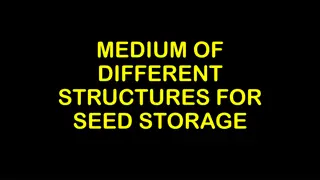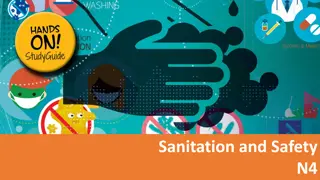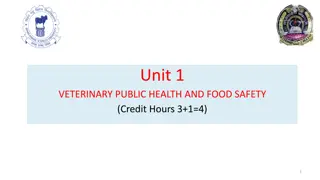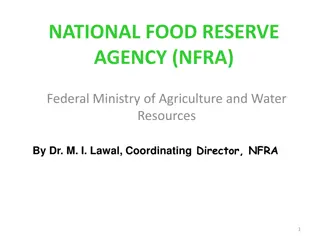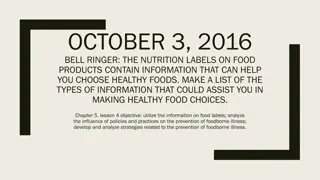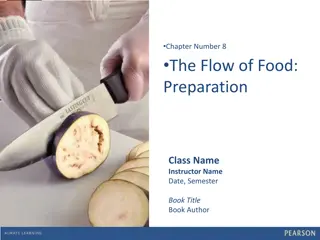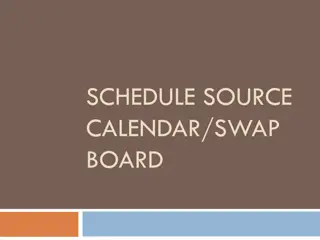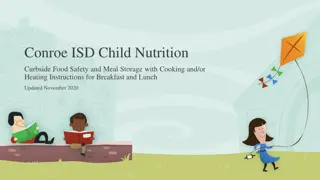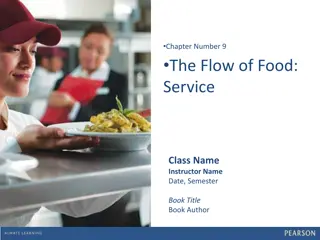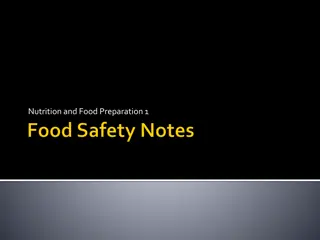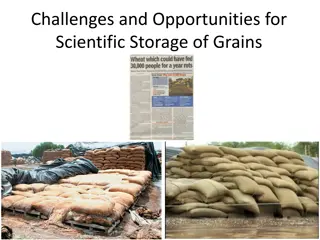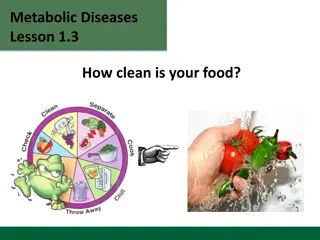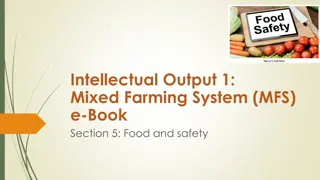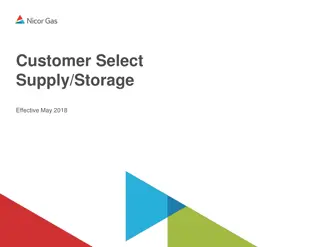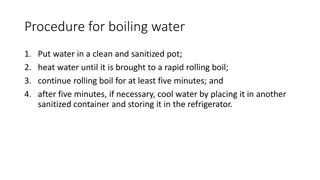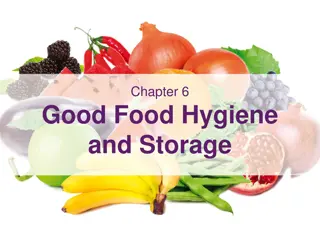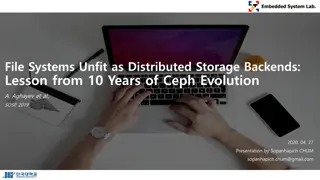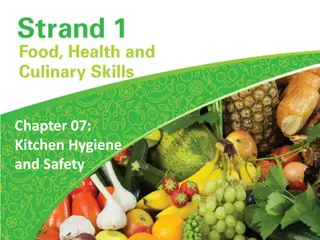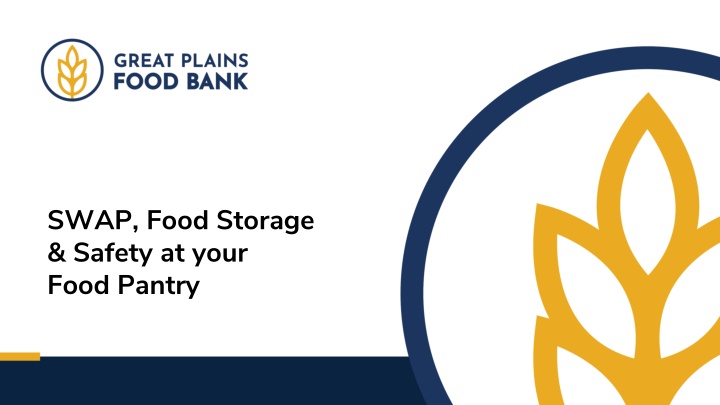
Supporting Wellness: SWAP Food Storage & Safety Guide
Learn about SWAP - a nutrition ranking system for food pantries, understand how SWAP works, use the stoplight structure to categorize foods, and get tips on food storage and safety practices. Discover best practices for building a successful pantry/meal site with agency partner tips.
Download Presentation

Please find below an Image/Link to download the presentation.
The content on the website is provided AS IS for your information and personal use only. It may not be sold, licensed, or shared on other websites without obtaining consent from the author. If you encounter any issues during the download, it is possible that the publisher has removed the file from their server.
You are allowed to download the files provided on this website for personal or commercial use, subject to the condition that they are used lawfully. All files are the property of their respective owners.
The content on the website is provided AS IS for your information and personal use only. It may not be sold, licensed, or shared on other websites without obtaining consent from the author.
E N D
Presentation Transcript
SWAP, Food Storage & Safety at your Food Pantry
Agenda Intro to SWAP Food Storage Food Safety
SWAP What is SWAP? o Supporting Wellness at Pantries (SWAP) is a stoplight nutrition ranking system designed to help promote healthy food choices at food banks and food pantries. o The goal of SWAP is to educate your shoppers about foods that can improve their health and to help them make informed decisions. How does SWAP work? o SWAP ranks foods based on their levels of: Saturated fat Sodium (salt) Sugars
SWAP cont. How to use SWAP o The stoplight structure to SWAP categorizes foods as: Food that is Green (Choose Often) Food that is Yellow (Choose Sometimes) Food that is Red (Choose Rarely) Cooking supplies, condiments and baby food are Black Not Ranked Non-food items and Misc. Products are Non-food No Value How can SWAP be implemented?
NOTE THAT THE LAST CONDENSED DISPLAY WILL NOT SHOW YOU THE NUTRITION VALUE Tile Display
Food Storage Preserves the quality. Preserves the nutritional value. First in first out method.
Food Safety Things to know: o Many canned and boxed products are safe to eat long after the code date on the container. Examples of code dates are: Expiration dates, Pack date, Sell-By date, and Use-by or Quality date o While food is safe to eat, it s nutrients and quality are at their peak the earliest on in their shelf life.
Agency Partner Best Practices Tips for building and maintaining a pantry/meal site that is successful now and, in the future.
Agency Partner Best Practices Tip #1-Don t Go it Alone! Make sure your bench is deep! Make sure you have a well-organized team of volunteers for: Decision making, recordkeeping, food safety, distribution, ordering, statistics entry, funding and food drives, marketing, community building, policies and procedures, succession planning We recommend 5-15 people working together on your entity s board and as volunteers to maintain your entity s operational structure year over year Partner with a cross-section of community agencies to learn what the neighbors in your community need most so you can be responsive to your community s changing needs: Social Service Agencies Other Pantries or Meal Sites Schools or Senior Centers Healthcare Entities
Agency Partner Best Practices Tip #2-Be curious about who you serve and offer choice Learn about your community What is your community s population? How many are living at or below the poverty line? Census.gov Learn what the need is in your community and what are the changes in the landscape of your community (younger families, seniors, etc.) If you are in a smaller community, do you draw community members living elsewhere in the county to utilize your site? Be flexible to be equitable; based on household/family size, offer food based on the number of individuals served versus a fixed amount of food Offer more frequent, weekend, or evening access hours Offer a choice model which is equivalent to grocery store shopping; neighbors get to shop the foods that they and their households will utilize based on preference, allergies, and nutrition
Agency Partner Best Practices Tip #3-Order the right amount for your site; seek to grow and diversify offerings Utilize your historical statistics to plan; use these statistics to make the case when writing grants or planning for funding from your local board Example: 100 Households served per month x each household receives an average of 30 lbs of food. How much should this pantry order per month? Answer: 3,000 pounds of food per month (more to have additional on hand) Partner with local entities to source more food outside of the monthly GPFB deliveries: Farmers that donate produce in season Retail Rescue-get connected with a local grocery store for more Hold food drives asking for specific highly desired items: Peanut Butter Drive, Diaper Drive, Canned Chicken Drive, etc. Include recipes with items at your site to empower neighbors to utilize a greater variety of foods
Agency Partner Best Practices Tip #4-Recruit Volunteers and Succession Plan Document your processes at your site so other volunteers can step in to assist you! Invite additional volunteers in (high school students, families, etc. faith community, etc.) to learn about your pantry operations and become a volunteer on a regular basis. Make plans for when you or your current team of volunteers are no longer operating the site. Who will continue to keep your site running? Give your successors the gift of a well thought out plan with which to keep your site operational Keep meticulous records and cross-train your volunteers to carry out ordering, distribution, statistics entry, food safety, and records management
Agency Partner Best Practices Tip #5-Ask for help and support from GPFB Staff and other Agency Partners! Our shared goal is ending hunger together! Invite your neighbors to utilize the additional offerings of support including SNAP Application Assistance and the Senior Food Box Program Utilize the grant writing assistance toolkit to search for additional funding to keep your site thriving and operational Learn if there are additional offerings like the Backpack Program, School Pantry Program, and Youth Summer Meals that you can offer to your neighbors Connect with other Agency Partners to learn what works and doesn t work for them and learn from one another
Thank You for your tireless work together with us to End Hunger! Q & A Visit our booth during the Food Bank Fair: 1-2pm for handouts and more information on SWAP!


